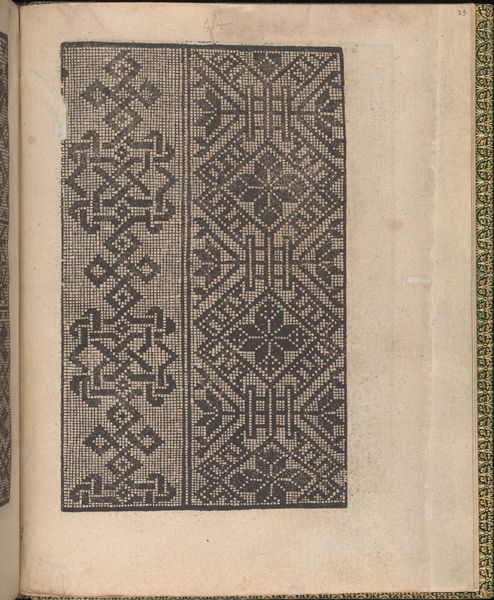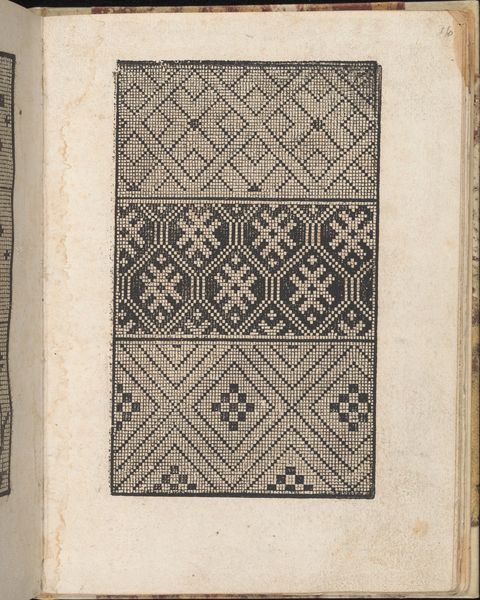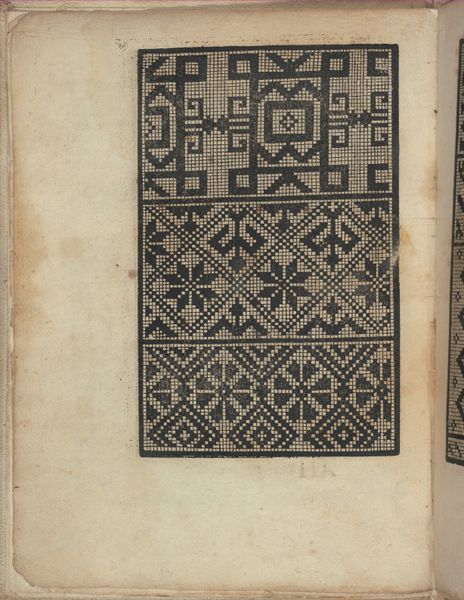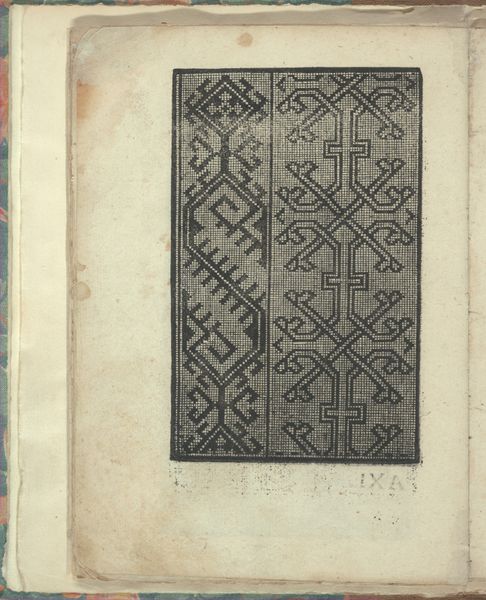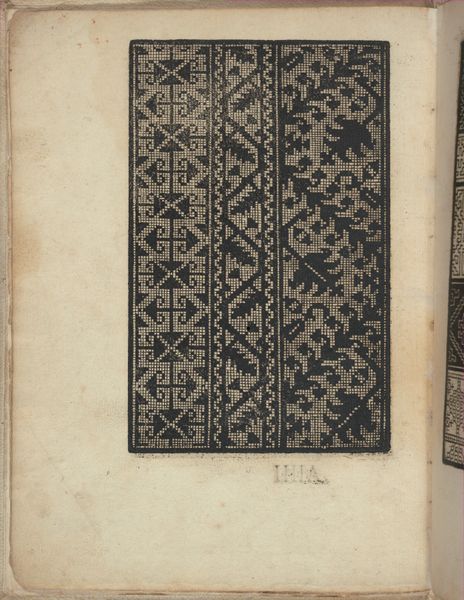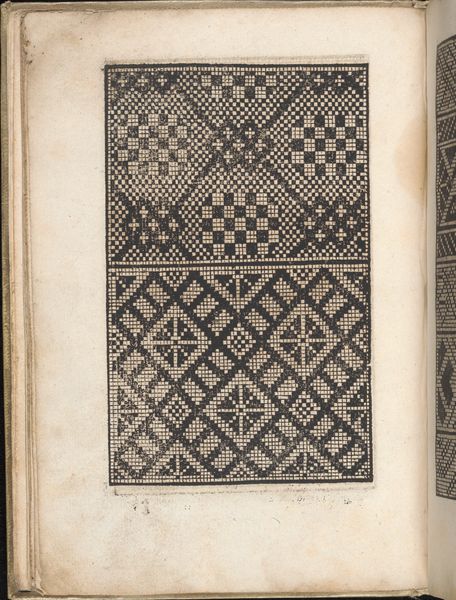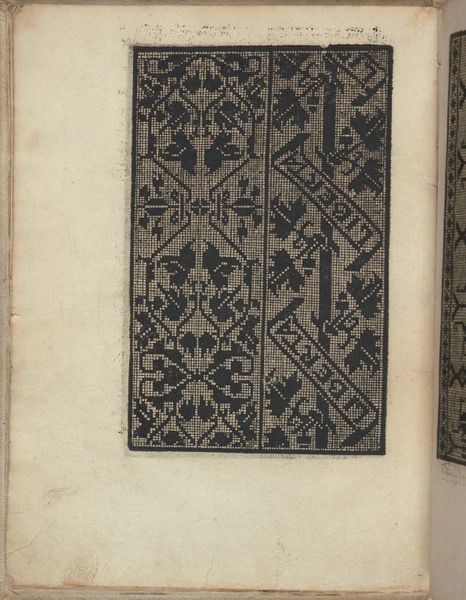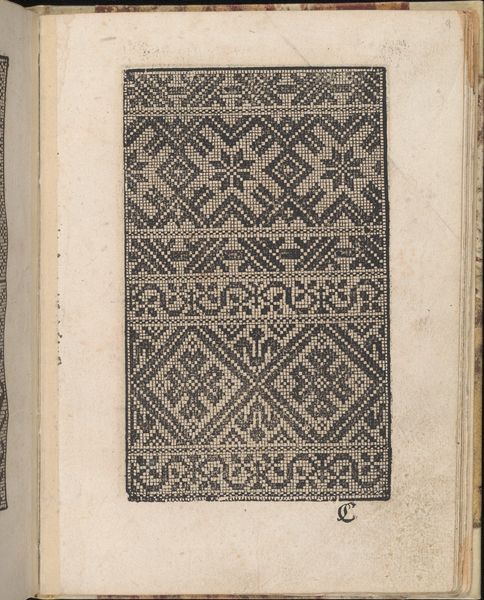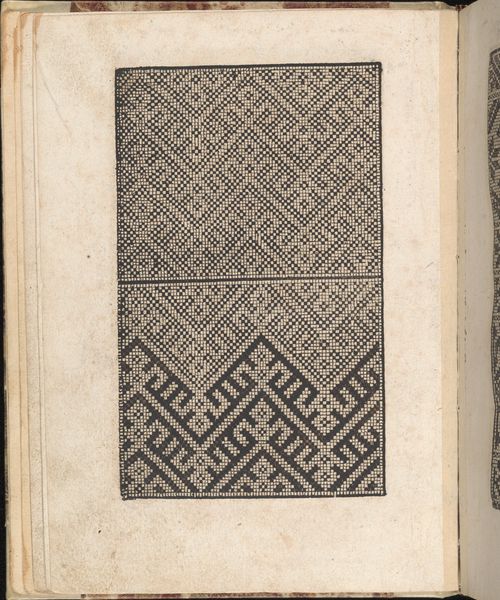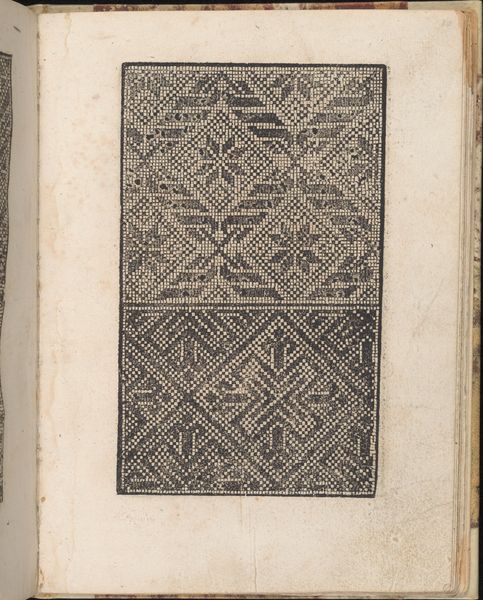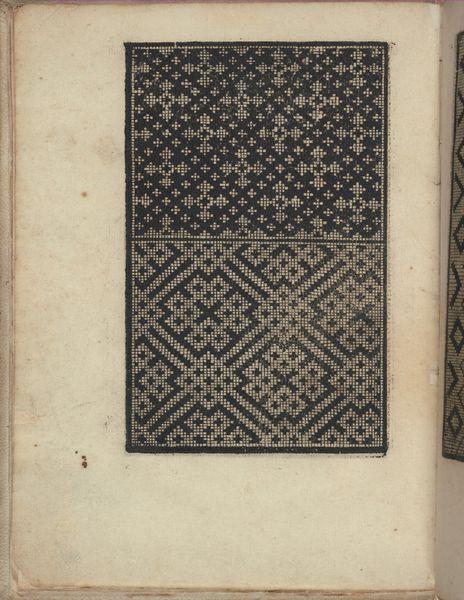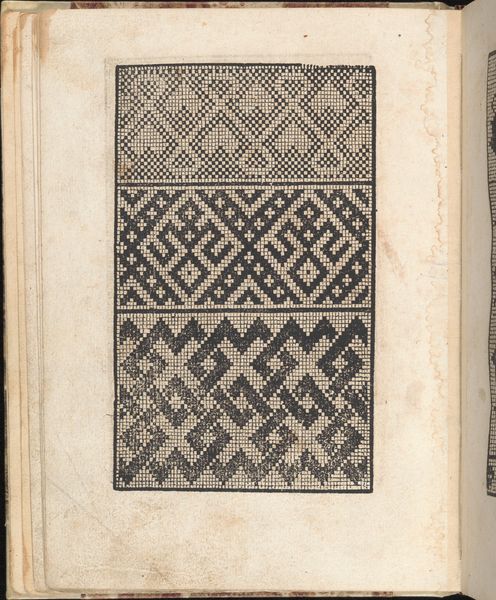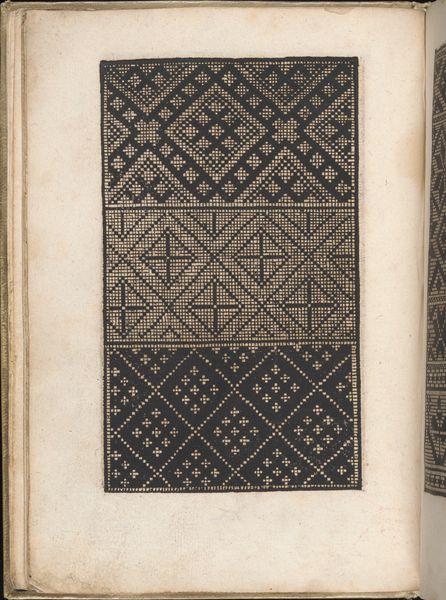
Esemplario di Lauori..., page 7 (recto) 1532
0:00
0:00
drawing, print
#
drawing
# print
#
11_renaissance
#
geometric
#
decorative-art
#
italian-renaissance
Dimensions: Overall: 8 7/16 x 6 5/16 in. (21.5 x 16 cm)
Copyright: Public Domain
Curator: This intriguing print is "Esemplario di Lauori..., page 7 (recto)," created by Giovanni Andrea Vavassore in 1532. It resides here at the Metropolitan Museum of Art. The precision is really striking. Editor: It looks like textiles to me—like a page from a design book showing patterns to be woven or stitched. Do we know for sure that's its function? Curator: Yes, it is from a book of embroidery designs, printed using woodcut techniques. Look at the strong contrasts, the figure and ground—very graphic. Note how the shapes create their own sense of balance. Editor: Well, considering that it dates from the early 16th century, during a time when textiles were a major signifier of status and wealth, and that embroidery was largely considered “women’s work” and a significant part of their cultural output, this could be an insight into domestic life, gendered labor and class in Renaissance Italy. The designs themselves seem deceptively simple. Curator: The power of geometric form. There's a deliberate repetition. You’ll note the designs include vertical elements joined with repeated horizontal shapes to create two highly structured, but different bands of woven abstraction. The interplay of black and white is masterfully handled. Editor: But let’s think about who had access to books and could practice embroidery and consider how these forms traveled between cultures as global trade exploded. Are these forms purely Italian or might they have circulated from the East, carried on the Silk Road and beyond? Curator: The designs also represent the beauty that can be achieved with fundamental forms, almost like minimalist exercises centuries before minimalism! Editor: Perhaps! These repeated motifs were a central part of life for women. They used them to assert agency and maintain connections to their culture through material arts and family relations. Curator: Considering Vavassore's ability to harness pattern and negative space, "Esemplario di Lauori..." provides a remarkable lens for appreciating the interplay of line and shape, one that still resonates today. Editor: Absolutely, it showcases the complex dynamics of gender, craft, and cultural exchange that continue to inform and shape our modern experience of domesticity and identity.
Comments
No comments
Be the first to comment and join the conversation on the ultimate creative platform.
